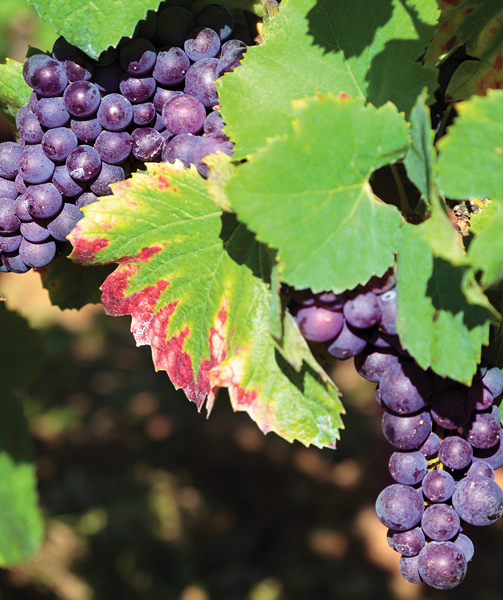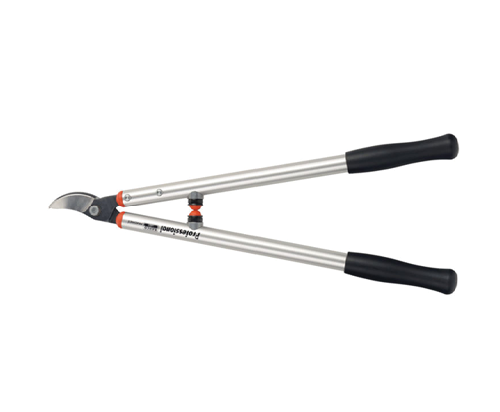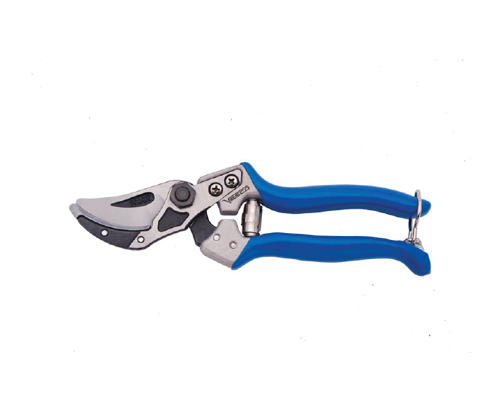

Breaking Down the Basics of Pruning
As we inch towards winter, it’s time to start thinking about pruning our trees, gardens and hedges. We spoke to Farmlands Technical Advisor Laurence Frost for some expert advice on how to get the pruning process right.
Why We Prune
• Pruning can be a lot of work, so why do we need to do it? Laurence says there are five main reasons why we should regularly prune our plants:
• Dead – removing dead wood can help the remaining tree to thrive. It can also be important for safety reasons, as dead branches are more likely to fall off during a storm and cause injury or property damage.
• Disease – likewise, trimming diseased branches can help to prevent the disease spreading to the rest of the tree.
• Crosses – Laurence says crossing branches can be problematic. “That's where wood lice and things live. It'll probably eventually snap, it'll become unproductive.”
• Production – whether in a commercial orchard or just your backyard fruit tree, pruning can open the plant up for sunlight and pollination, boosting fruit growth.
• Shape – trimming the tree to the right shape can not only assist with production, but make it look more attractive and prevent it from overwhelming nearby plants.
“Some people have ornamental plants and are pruning to make them look good, while others are pruning because they want a big, bountiful harvest from their fruit trees, but it all comes back to the fundamentals,” Laurence says.

Pruning for Plant Type
Before you start lopping off branches, it’s important to understand the pruning needs of each individual tree. Laurence says one crucial thing to know is whether that plant fruits on this year’s growth or last year’s growth. “Plants that fruit on the current year’s wood include grapes and feijoas, while most of the brambles fruit on wood that grew last year. That's all your cane stuff, your boysenberries and your blackberries,” he explains. “Apples fruit on spurs, so they fruit on wood that grew last year. You have a nice new growth, it puts out little wee spur, the flower comes off the spur, and then comes the fruit.” For plants that fruit on new wood like feijoas, prune off the older growth where necessary back to its frame.
“Grapes are a classic example. You've got this old trunk that's 30 years old and it's just got this little growth, and they just prune it to two buds, and those two buds will then grow the rest of that vine to have the fruit.” If your plant fruits on new growth, you need to focus on thinning it, removing branches to open it up for sunlight and pollination, Laurence says. “You want a blackbird to be able to fly through – birds can be great pollinators and pest controllers – so we take out a few branches to make our tree more open, and that way you have the desirable plant shape “With citrus you just need to trim them back, but not so hard that you produce water shoots. Water shoots are the vertical growth that are generally not fruit bearers; its their laterals that then set flowers and ultimately fruit.”
With grafted plants you need to watch for root stock or under stock dominance. This root stock needs to be removed as soon as practicable, and in some plants, you’ll need to watch for reversion. “Variegated plants invariably want to go back to green, the most productive colour to be,” Laurence says. “Before you know it your beautiful, variegated plant has become this green undesirable plant and not what you originally purchased, so you really need to cut out the reversion and still keep the shape.”

Picking Your Tools
Laurence, a self-described “secateur snob”, says no matter what cutting tool you choose for your pruning, it needs to be sharp. “If it’s not sharp, you have the possibility of an injury to wrists, arms and elbows when trying to cut through branches.” With cutting tools, gardeners need to be aware of the difference between bypass - like for example scissors - compared to an Anvil pruner. Anvil pruners have a blade that cuts toward the flat surface that is the anvil. “The neat thing is an anvil takes about 40% less energy to operate, which is great for older people as it takes less power,” Laurence says. “The advantage of a bypass is the blade is the closest thing to the cut. And as they say with shaving, nothing cuts as close as a blade.” Laurence’s other piece of advice on tools is to make sure the one you are using is big enough for the branch you are trying to cut. “Use the right tool for the job at hand. If your secateurs are too small for the branch you wish to prune then use a lopper or pruning saw.”

When to Prune
So when should you break out the pruning equipment and start grooming your plants? Laurence says early winter is your best bet for most plants. “You need to be pruning during that dormant period. Citrus is never dormant, they just slow down, so when they've slowed down in June, that’s a good time to prune. Don't sacrifice fruit though, you can always prune after you have harvested.” The job is not over once you have finished pruning. Laurence says to look after the tree you should use pruning paint on pruning wounds, especially those bigger than 1cm. “And then the home gardener would use spraying oil, copper, lime sulfur and Yield. The copper will take care of most fungi. The oil takes care of most insects, and then you have the lime sulfur or Yield for moss and lichen control.”
With the prevalence of nuisance insect pests – like Lemon Tree Borer, for example – try to limit or reduce your pruning activities between October-February as that is when it’s most active and damaging to your desirable trees and shrubs. Laurence has one final message to gardeners doing their yearly pruning: make sure you get rid of the garden waste once you are done. “We need to make sure we emphasise to them disposing of our pruning waste, especially diseased waste as it could not only reinfect your plants but also those in the neighbourhood.”


